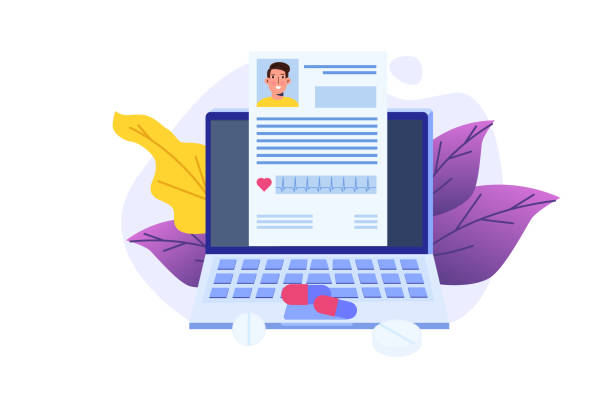Introduction to Secure Website Design and its Importance in the Digital Age

In today’s fast-paced and interconnected world, where information and data are considered the most valuable assets, secure website design is no longer a luxury choice but an undeniable necessity that forms the foundation of online businesses and digital interactions.
Websites, as business storefronts, communication platforms, and service portals, handle a vast amount of sensitive data; from users’ personal information and financial details to trade secrets and confidential organizational data, all are exposed to various cyber threats.
#Website_security refers to a set of measures taken to protect data, preserve user privacy, and ensure the accessibility and integrity of online systems.
Without strict adherence to the principles of secure website design, your website may at any moment become the target of malicious attacks such as SQL injection, cross-site scripting (XSS), Distributed Denial of Service (DDoS) attacks, or ransomware.
The consequences of such attacks can include loss of brand reputation, heavy financial losses due to data theft or service interruption, severe legal penalties for violating privacy regulations, and ultimately, loss of customer trust.
Understanding how a security incident can cripple an organization’s operations and even lead to its closure underscores the importance of this issue.
Therefore, every web developer, system administrator, and business owner must prioritize secure website design and consider it an integral part of the Web Development Life Cycle (SDLC).
This proactive and comprehensive approach not only protects your information and infrastructure but also helps you establish a sustainable, trustworthy, and competitive business in the digital space in the long run.
Does your current website build the trust that potential customers should have in your business? If not, it’s time to get your professional and impactful corporate website with Rasavweb.
✅ Fully custom design tailored to your brand identity
✅ Increased lead generation and business credibility in the eyes of customers⚡ Contact us for a free consultation!
Fundamental Principles of Web Security for Developers and the Necessity of Their Implementation
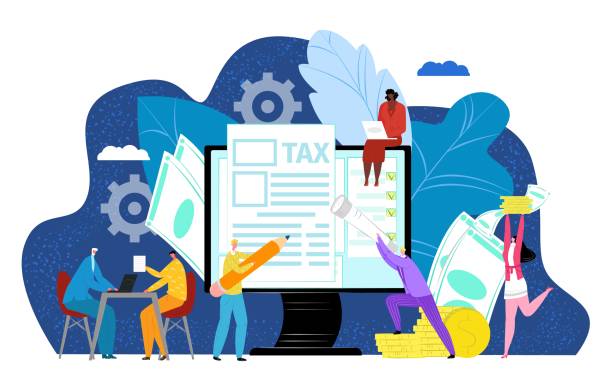
To achieve a secure and resilient website design, developers must be thoroughly familiar with the fundamental principles and rules of web security and apply them throughout all stages of their software development life cycle.
The reputable OWASP (Open Web Application Security Project) organization has introduced a list of the top 10 common and dangerous vulnerabilities, neglecting which can have irreparable consequences.
#Input_validation, as one of the most important principles, prevents the injection of malicious code or unauthorized data (such as SQL Injection or Command Injection attacks) into the system; all data entered by the user must be carefully reviewed and sanitized.
Furthermore, secure #session_management and encryption of sensitive information during transmission and storage prevent unauthorized access to user data and active session hijacking.
Cybersecurity must be considered in all layers of a website, including server-side, client-side coding, and the database.
Developers must be vigilant against attacks such as Cross-Site Scripting (XSS), which allows attackers to execute malicious code in users’ browsers, and Cross-Site Request Forgery (CSRF), which tricks users into performing unintended actions, and implement appropriate defensive measures like using anti-CSRF tokens and Output Encoding.
This specialized approach not only helps protect information but also ensures that the #secure_software_development process proceeds in an integrated and effective manner.
Continuous training of the development team on the latest threats, emerging vulnerabilities, and best practices for secure coding is of vital importance.
By investing in appropriate knowledge and tools, a strong foundation for secure website design can be established, making it resilient against many threats and continuously improving.
Key Technologies in Maintaining Website Security and Its Defensive Structure
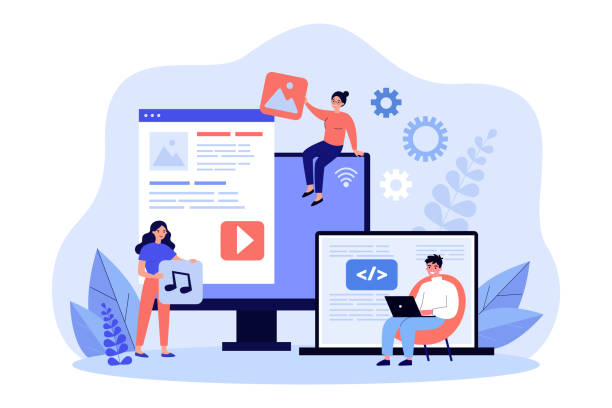
To ensure a comprehensive and secure website design, the use of a set of advanced and efficient technologies is essential, acting as defensive layers.
One of the first and most important steps is the implementation of SSL/TLS protocols, which secure communications between the user and the server by encrypting data, preventing eavesdropping or data manipulation in transit.
#SSL_TLS_security ensures website security by creating an encrypted communication channel, which is not only vital for protecting sensitive information such as passwords and credit card details but also positively impacts search engine rankings.
Web Application Firewalls (WAFs) also act as an additional defensive layer, monitoring incoming and outgoing traffic to identify and block malicious attacks such as SQL Injection and XSS.
A WAF can detect signature-based attacks and even zero-day attacks.
Intrusion Detection Systems (IDS) and Intrusion Prevention Systems (IPS) also play a crucial role in identifying suspicious network activities and blocking them; IDS only alerts, while IPS actively blocks threats.
Furthermore, implementing Content Security Policy (CSP) helps combat XSS attacks by forcing the browser to load only trusted resources (scripts, images, stylesheets).
Using HTTP security headers such as X-Frame-Options to prevent Clickjacking and X-Content-Type-Options to combat MIME-sniffing also significantly enhances website security.
Web application firewalls are not only active in preventing attacks but can also provide detailed reports of intrusion attempts, which helps in continuous analysis and improvement of security strategies.
| Technology | Primary Application | Key Advantage in Secure Website Design |
|---|---|---|
| SSL/TLS | Encrypts communications between user and server to ensure data confidentiality and integrity. | Preserves user privacy, prevents eavesdropping and data manipulation during transmission, and increases trust. |
| WAF (Web Application Firewall) | Filters and monitors HTTP/HTTPS traffic at layer 7 (application) to identify and block attacks. | Blocks common web attacks such as SQL Injection, XSS, and Cross-Site Request Forgery (CSRF). |
| IDS/IPS (Intrusion Detection/Prevention System) | Detects and prevents intrusions by monitoring network traffic to identify suspicious patterns. | Provides immediate alerts and/or active countermeasures against unauthorized activities and security anomalies in the network. |
| CSP (Content Security Policy) | Controls resources loaded on the web page (scripts, styles, images, etc.) via HTTP headers. | Reduces the risk of XSS attacks, content injection, and other malicious script-based attacks. |
These technologies, together, provide a robust and multi-layered defense for any website, helping you approach secure website design with greater confidence.
Each of these systems plays a complementary role, and neglecting any one can create a security vulnerability that attackers can exploit.
Therefore, a comprehensive and layered approach to implementing security tools is essential, and one should never rely on a single solution.
Common Challenges and Threats in Secure Website Design and Countermeasures
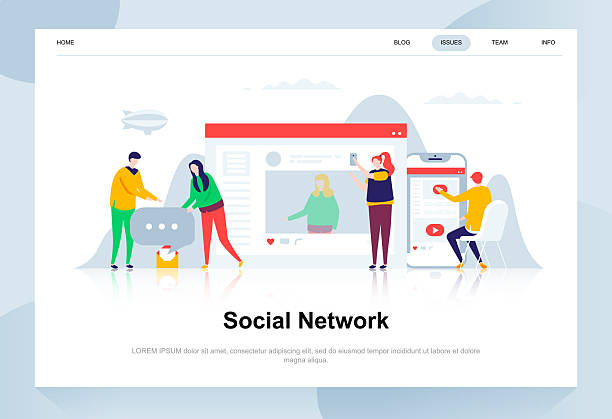
Despite significant advancements in cybersecurity and defensive tools, websites are constantly exposed to various types of sophisticated and malicious attacks.
Identifying and accurately understanding these #cyber_threats is the first and most crucial step in implementing a secure website design.
SQL Injection attacks, which aim to manipulate or extract data from the database by injecting malicious code into user input fields, remain one of the most common and dangerous threats.
Cross-Site Scripting (XSS) attacks allow attackers to execute malicious code (such as JavaScript) in the victim’s browser, which can lead to the theft of cookies, session information, or even alteration of page content.
Furthermore, Distributed Denial of Service (DDoS) attacks overwhelm the server with a massive volume of fake traffic, leading to resource exhaustion, website downtime, and denial of access for legitimate users.
Brute Force attacks to guess passwords and phishing attacks to steal users’ identity and credential information are also significant and ongoing challenges.
DDoS attacks not only damage business reputation but can also lead to significant revenue loss during service downtime.
The challenging question is how to counter this evolving and diverse range of threats and always stay one step ahead of attackers? The answer lies in a multi-layered, comprehensive, and dynamic approach that includes continuous training of the development team, using up-to-date security tools, implementing robust defensive mechanisms across all layers, and conducting regular security assessments and penetration testing.
Secure website design requires continuous attention to detail, updating knowledge against emerging threats, and readiness for rapid incident response.
Failure to address these challenges can lead to serious vulnerabilities, the remediation of which can be not only costly but sometimes impossible.
Therefore, a precise understanding of these threats and countermeasures is a vital principle in the secure web development process.
Does your current website convert visitors into customers, or does it drive them away? Solve this problem forever with a professional corporate website design by Rasavweb!
✅ Build credibility and powerful branding
✅ Attract target customers and increase sales⚡ Get a free consultation now!
The Role of Updates and Maintenance in Sustainable Website Security and Data Protection
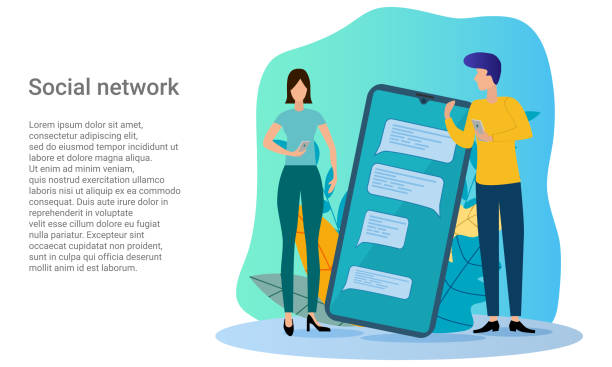
One of the most important, yet often overlooked, aspects of secure website design is its continuous maintenance and updating.
Many successful cyberattacks exploit known vulnerabilities in outdated software, deprecated versions of Content Management Systems (CMS), plugins, themes, and even older versions of programming languages and databases.
#Security_updates for your CMS, including WordPress, Joomla, Drupal, or any other framework, along with all plugins, themes, and PHP and database versions (such as MySQL or PostgreSQL), are vital.
Developers and website administrators must always be vigilant for Security Advisories and apply security updates as soon as they are released.
This process not only helps close known security gaps but also improves website performance and compatibility.
Regular maintenance includes periodic security scans to identify new vulnerabilities, monitoring logs for suspicious activities, and regular, automated backups of all data and the database.
Backups must be stored in a secure location, separate from the main server, and encrypted to enable fast and complete data recovery in case of disaster or attack.
This approach guides how to actively protect a website against threats and even recover to a normal state after an attack.
A website that is continuously updated and maintained is not only more secure but also provides a better user experience and prevents technical issues.
Content Management Systems like WordPress, due to their popularity and widespread use, are prime targets for many attackers, making strict adherence to update and maintenance principles even more crucial.
Secure website design is not a one-time process but an ongoing commitment to protection, prevention, and rapid response, requiring vigilance and continuous updates.
Security Policies and User Privacy Protection in Website Design
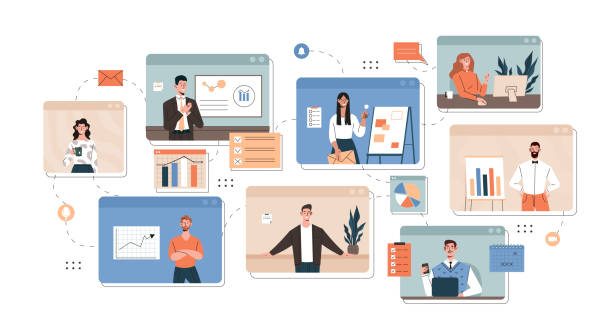
User privacy protection is one of the main pillars of any secure and successful website design in today’s world.
In the digital age, users are more concerned about their personal information than ever before, and adhering to #user_privacy is not only a legal and ethical obligation but also a critical factor in earning and maintaining their trust in an online brand or service.
Strict laws and regulations such as GDPR (General Data Protection Regulation) in Europe and CCPA (California Consumer Privacy Act) in the USA have set stringent standards for the collection, storage, processing, and sharing of personal data, and their violation can lead to heavy financial penalties.
Developers must incorporate the principles of ‘Privacy by Design’ and ‘Security by Design’ throughout all stages of their website development.
This means that security and privacy should be ingrained in the system’s architecture from the outset and considered core components, rather than being added as a separate, afterthought section at the end.
Encrypting sensitive data, both at rest in the database and in transit via protocols like HTTPS, using strong authentication protocols such as MFA (Multi-Factor Authentication), and educating users about the importance of strong passwords and their proper management, are among the measures that must be taken.
Additionally, websites must have a clear, transparent, and accessible Privacy Policy that informs users what data is collected, how it is used, with whom it is shared, and how it is protected.
These explanations not only contribute to improving secure website design but also assure users that their information is safe and their rights are respected.
A comprehensive approach to privacy protection includes regular audits, Privacy Impact Assessments (PIA), and ensuring compliance with local and international laws.
Case Studies and Important News in Web Security and Its Consequences

In the dynamic and evolving world of cybersecurity, awareness of the latest #security_news and case studies of real cyberattacks is essential for a deeper and more tangible understanding of the importance of secure website design.
Every day, we witness news of data breaches, ransomware attacks, and unauthorized access to websites, both large and small, across the globe.
These incidents not only cause significant financial damage but also severely undermine the reputation and public trust in organizations, sometimes irreparably.
For example, the 2017 Equifax breach, which led to the exposure of sensitive information of 147 million people, or recent attacks on major gaming companies and social media platforms that revealed data of millions of users, demonstrate the widespread nature, complexity, and destructive potential of cyber threats.
These analytical and real-world cases help us identify common weaknesses in web security and learn valuable lessons for strengthening secure website design strategies.
Loss of customer data can lead to serious legal consequences, heavy penalties, and the permanent loss of public trust and customer loyalty.
Awareness of these incidents helps website administrators and developers to proactively consider enhancing the security of their systems, not merely relying on preventive measures but also being prepared for rapid response, crisis management, and recovery after attacks.
This section of the article, with its news-oriented and engaging aspect, can further involve the audience in the topic of web security and introduce them to the harsh yet instructive realities of the cyber world.
| Security Action | Description | Importance |
|---|---|---|
| Use HTTPS (SSL/TLS) | Encrypts all communications between the user’s browser and the website server. | Essential for privacy and data integrity, and improving SEO ranking. |
| Regular Software Updates | Keep CMS, plugins, themes, server OS, and auxiliary software up-to-date. | Blocks known vulnerabilities and reduces the risk of attacks. |
| Web Application Firewall (WAF) | Deploys a web application firewall to filter and monitor HTTP/HTTPS traffic. | Effective defense against SQL Injection, XSS, and other application layer attacks. |
| Regular and Tested Backups | Regular and automated backups of all website files and the database. | Ability to quickly and completely restore data after an attack, error, or natural disaster. |
| User Input Validation | Thoroughly validates and sanitizes all user input data (both client-side and server-side). | Prevents injection attacks (SQLi, Command Injection) and XSS. |
| Proper Password Management | Enforces strong passwords (combination of letters, numbers, and symbols), hashes passwords instead of storing them directly (with strong algorithms like bcrypt), and enables multi-factor authentication (MFA). | Protects user accounts against Brute Force and Credential Stuffing attacks. |
This checklist serves as a practical and explanatory guide for anyone looking to improve their website security status.
By considering these points and adhering to them strictly, security risks can be significantly reduced, and a secure and reliable user experience can be provided.
These layered measures are key to building a website resilient against modern attacks.
Useful Tools and Resources for Enhancing Website Security and Periodic Audits

To ensure a secure website design and maintain its stability against growing threats, the use of specialized tools and resources is vital.
These tools can assist you in identifying vulnerabilities, monitoring network and website traffic, and responding quickly and effectively to security threats.
#Web_security_scanners, such as Acunetix, Burp Suite, Nessus, OWASP ZAP, or Nikto, can automatically discover known weaknesses in your code, server configuration, and website components.
By simulating attacks, these tools provide comprehensive reports of potential vulnerabilities, which can serve as a basis for corrective actions.
Furthermore, Penetration Testing tools allow you to evaluate your website from the perspective of a real attacker and measure its resistance to simulated attacks; these tests are often performed manually by specialists to identify more complex vulnerabilities.
Penetration testing is an active method for assessing system security that can uncover vulnerabilities that automated scanners might miss.
In addition to software tools, online educational resources such as Coursera and edX courses, OWASP documentation, specialized cybersecurity forums, and security consulting firms (like IBM Security, Deloitte Cyber) can play a significant role in enhancing your and your team’s knowledge and experience.
These resources provide practical, specialized, and up-to-date guidance for improving website security.
Investing in appropriate tools and continuous team training is an integral part of any successful security strategy.
Utilizing periodic security audits by external specialists can also help identify blind spots, confirm compliance with standards, and continuously improve the security posture.
Integrating security tools into the CI/CD (Continuous Integration/Continuous Delivery) pipeline can also help identify vulnerabilities early in the development cycle.
This section of the article, with its specialized and guiding approach, outlines the practical path to enhancing website security.
Tired of losing business opportunities due to not having a professional corporate website? Worry no more! With Rasavweb’s corporate website design services:
✅ Your brand’s credibility and professionalism will increase.
✅ You’ll attract more customers and sales leads.⚡ Get a free consultation to start now!
The Future of Secure Website Design and Emerging Trends on the Security Horizon
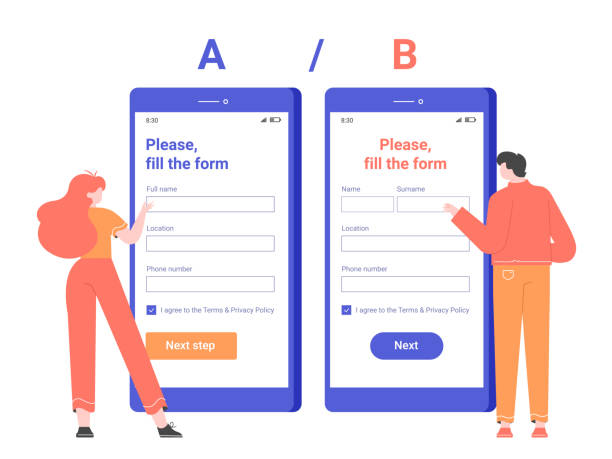
The field of cybersecurity is constantly evolving and transforming, with new challenges and solutions emerging alongside new technologies.
Understanding these #emerging_trends is essential for continuous secure website design and maintaining resilience against future threats.
Artificial Intelligence (AI) and Machine Learning (ML) are revolutionizing how security threats are detected and prevented, enabling systems to automatically identify complex malicious patterns, predict attacks, and respond to threats; this goes beyond merely relying on known signatures.
Blockchain also holds high potential in decentralized authentication, digital identity management, and maintaining Data Integrity, which can significantly enhance the security of transactions and data.
Serverless architectures and Cloud Computing, despite their numerous benefits in scalability and cost reduction, present their own security challenges that require new security approaches, including managing functions and security configurations in cloud environments.
The ‘Zero Trust’ approach, which emphasizes never trusting any user, device, or network, whether inside or outside the organization’s boundaries, is also becoming a new standard in cybersecurity; this approach analyzes how to combat the increasing complexity of attacks and the expanding attack surface, constantly staying one step ahead of attackers.
Artificial Intelligence can be highly effective in detecting unknown attacks (Zero-day attacks) and improving the Mean Time to Respond.
The future of secure website design will increasingly rely on AI for threat analysis, blockchain for data and identity security, and Zero Trust approaches for access management.
Therefore, developers and website administrators must become familiar with these new technologies, evaluate their capabilities, and leverage them to improve and innovate their system security strategies.
Conclusion and Final Recommendations for a Resilient and Trustworthy Website
![]()
In conclusion, it can be confidently stated that secure website design is a complex, multifaceted, and continuous process that requires special attention at all stages of website development and maintenance.
It is a long-term investment whose benefits far outweigh its costs, as it ensures the preservation of reputation, customer trust, and business sustainability.
From implementing SSL/TLS certificates and web application firewalls to regular software updates, precise user input validation, and continuous team training, every step in the path of #website_security is crucial and should not be overlooked.
Furthermore, protecting user privacy and complying with relevant laws and regulations is not only a legal requirement but also a fundamental factor in earning and maintaining their trust, signifying adherence to ethical principles and responsibility for personal data.
A #resilient_website not only prevents attacks and minimizes its vulnerabilities but also, in the event of a security incident, will be capable of rapid identification, effective response, and quick and complete recovery.
The final recommendation is to embed security as a culture within your organization.
This means that everyone involved in the web design and development process, from senior managers to developers, IT specialists, and even end-users, must be aware of the importance of security, accept their responsibility in this regard, and adhere to security protocols.
Collaborating with cybersecurity specialists and conducting regular security audits by third parties can also help you uncover hidden weaknesses and improve your defensive strategies.
Secure website design means building platforms that not only offer excellent functionality and meet business needs but are also resilient against the growing threats of the digital world.
By adopting a comprehensive, continuous, and proactive approach, you can ensure that your website remains secure, trustworthy, and successful for years to come.
Frequently Asked Questions
| Question | Answer |
|---|---|
| What is secure website design? | Secure website design is a process in which websites are built with security principles in mind to be resilient against cyberattacks and to protect user and business information. |
| Why is secure website design of high importance? | To prevent unauthorized data access, sensitive information leaks, malware attacks, loss of user trust, damage to business reputation, and legal consequences resulting from data breaches. |
| What are the most common website vulnerabilities? | SQL Injection, Cross-Site Scripting (XSS), Cross-Site Request Forgery (CSRF), broken authentication and session management, and sensitive data exposure. |
| How can SQL Injection attacks be prevented? | By using Prepared Statements with parameterized queries, input validation, and restricting database access. |
| What are the methods to counter XSS (Cross-Site Scripting) attacks? | User input validation, output encoding before displaying in HTML, and using Content Security Policy (CSP). |
| What is the role of HTTPS in website security? | HTTPS encrypts communication between the user’s browser and the website server using an SSL/TLS certificate, preventing eavesdropping, tampering, or forgery of data. |
| What are the best practices for managing user passwords? | Enforcing strong passwords (a combination of letters, numbers, and symbols), hashing passwords instead of storing them directly (with strong algorithms like bcrypt), and enabling two-factor authentication (2FA). |
| What is the importance of user input validation? | Input validation prevents malicious or unexpected data from entering the system, which could lead to vulnerabilities such as SQL Injection or XSS. |
| What impact do security reviews and regular audits have on site security? | These reviews help identify vulnerabilities and security weaknesses early, allowing them to be fixed before they can be exploited. |
| What is the application of Web Application Firewall (WAF) in secure website design? | A WAF acts as a protective layer between the user and the website, analyzing incoming traffic, identifying, and blocking common web attacks like SQL Injection and XSS. |
And other services of Rasavweb Advertising Agency in the field of advertising
Smart SEO: An innovative service to increase user engagement through attractive UI design.
Smart Social Media: Revolutionize SEO ranking improvement with the help of attractive UI design.
Smart Conversion Rate Optimization: An innovative service to enhance SEO ranking improvement through marketing automation.
Smart Direct Marketing: An effective tool for analyzing customer behavior with the help of intelligent data analysis.
Smart Custom Software: Designed for businesses looking to increase sales through marketing automation.
And over hundreds of other services in the field of internet advertising, advertising consultation, and organizational solutions
Internet Advertising | Advertising Strategy | Advertorial
Sources
Secure Website Design
Website Security Tips
Comprehensive Site Security Guide
Web Security Best Practices
? Ready to transform your business in the digital world? Rasavweb Afarin, with expertise in secure website design, professional SEO, and content marketing, paves your path to success and visibility. Guarantee the future of your online business with us.
📍 Tehran, Mirdamad Street, next to Bank Markazi, Kazerun Jonubi Alley, Ramin Alley, No. 6

